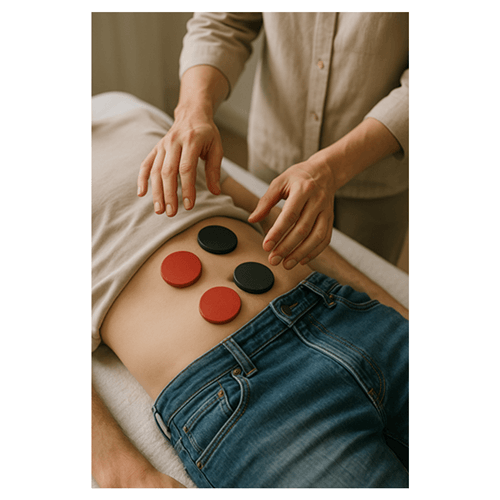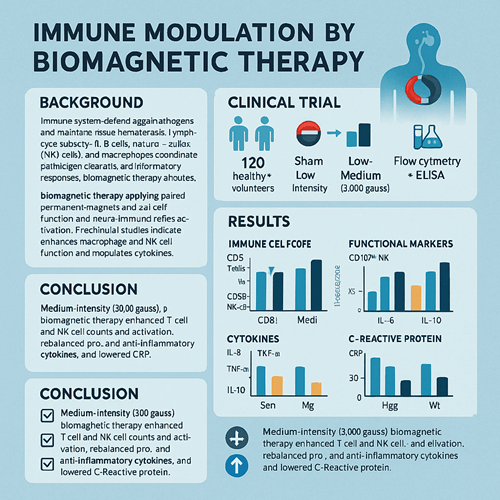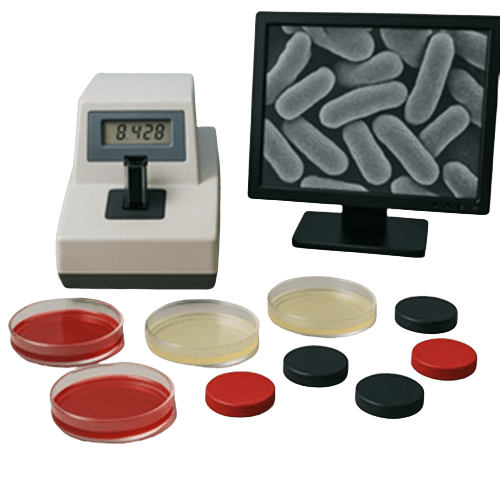Biomagnetic Therapy is an alternative treatment that uses paired magnets to rebalance the body’s local pH and improve circulation. It is increasingly applied to common digestive problems—such as gastrointestinal discomfort, indigestion, and imbalances in the gut microbiota. This article explains its principles, mechanisms, indications, treatment methods, and precautions in a straightforward way.
1. Principles of Biomagnetic Therapy
Developed in 1988 by Dr. Isaac Goiz, the method relies on placing one negative (“–”, typically black) and one positive (“+”, typically red) magnet on specific body points. According to theory:
- Negative pole draws excess hydrogen ions, making the tissue more alkaline.
- Positive pole releases trace hydrogen ions, making the tissue more acidic.
Together, the paired magnets create a local “biomagnetic field” that restores acid–base balance, enhances microcirculation and metabolism, inhibits pathogens, and supports tissue repair.
2. Common Digestive Issues and Their Causes
- Gastrointestinal discomfort: bloating, heartburn, acid reflux—often due to excess stomach acid, weak gastric motility, or poor mucosal protection.
- Indigestion: post-meal fullness, belching, abdominal pain—often linked to H. pylori infection, motility disorders, or digestive-enzyme imbalances.
- Gut-microbiota imbalance: reduced beneficial bacteria and overgrowth of harmful species can cause diarrhea, constipation, malabsorption, and impaired immunity.
Conventional medicine uses drugs (e.g. proton-pump inhibitors, prokinetics, probiotics). Biomagnetic Therapy offers a non-pharmaceutical approach, with minimal side effects and repeatable application.
3. How Biomagnetic Therapy Eases Gastrointestinal Discomfort
- pH balancing: paired magnets can neutralize excess stomach acid or stimulate acid when it’s insufficient, relieving heartburn.
- Improved circulation: magnetic fields boost microcirculation in the gut lining, accelerating inflammation resolution and mucosal repair.
- Nervous-system modulation: magnetic stimulation may influence autonomic nerves that control smooth-muscle contractions, normalizing motility.
Example applications:
- For acid reflux, place a pair of magnets on either side of the lower sternum at stomach-level for 15–20 minutes. Many patients report immediate relief.
- For gas and bloating, apply magnets above and below the navel in pairs to encourage gas expulsion via enhanced intestinal movement.
4. Addressing Indigestion with Biomagnetic Therapy
- Boosting digestive enzymes: magnets placed over the pancreas region may encourage enzyme secretion and improve digestion.
- Stimulating bowel movement: magnets over the colon help regulate peristalsis, easing both constipation and mild diarrhea.
- Targeting H. pylori: some studies suggest weak magnetic fields can disrupt bacterial adhesion and metabolism, aiding infection control.
Protocol example:
- Place a magnet pair on the upper abdomen (over the gastric antrum/duodenum junction) for 20 minutes daily for 7–10 days.
- Similarly, apply magnets at the colon area (two finger-widths below the navel) once per day for the same period.
5. Supporting Gut-Microbiota Balance
- Optimizing the gut environment: magnetic fields may stabilize redox potential, making conditions more favorable for beneficial bacteria.
- Strengthening the mucosal barrier: improved microcirculation supports healthy barrier function, preventing overgrowth of pathogens.
- Synergy with probiotics: combining biomagnetic treatment with probiotic supplements often yields better, longer-lasting results.
6. Application Guidelines
- Choosing magnets: 2,000–5,000 Gauss neodymium magnets, 20–30 mm diameter, work well.
- Polarity identification: red or “+” is the positive pole; black or “–” is the negative.
- Duration: 15–30 minutes per session, once or twice daily. A full course is typically 7–14 days.
- Skin preparation: clean and dry the area to prevent slippage.
- Precise placement: follow professional diagrams or a trained therapist’s guidance to ensure targets are accurate.
7. Evaluating Effectiveness and Individual Variability
Results vary by individual. Many report relief after 3–5 sessions—reduced bloating, smoother digestion, and restored appetite. If symptoms persist or worsen, seek conventional medical evaluation.
8. Precautions and Contraindications
- Avoid use in pregnant women and people with cardiac pacemakers.
- Do not apply over open wounds.
- Not for active gastrointestinal bleeding.
- Rotate placement sites to prevent skin irritation.
9. Enhancing Outcomes with Lifestyle Changes
For best results, combine biomagnetic therapy with:
- Dietary adjustments: eat small, low-fat meals; avoid irritants.
- Regular routine: ensure adequate sleep; reduce stress.
- Gentle exercise: walking or yoga to support bowel function.
- Stress management: techniques like meditation to prevent functional digestive disorders.
10. Conclusion
Biomagnetic Therapy offers a safe, noninvasive complement to standard treatments for digestive complaints—acid reflux, indigestion, and gut-flora disturbances. While not a cure-all, when applied correctly and combined with medical care and healthy habits, it can provide meaningful relief and support digestive health. This overview should help anyone curious about trying or understanding this approach to gut wellness.




